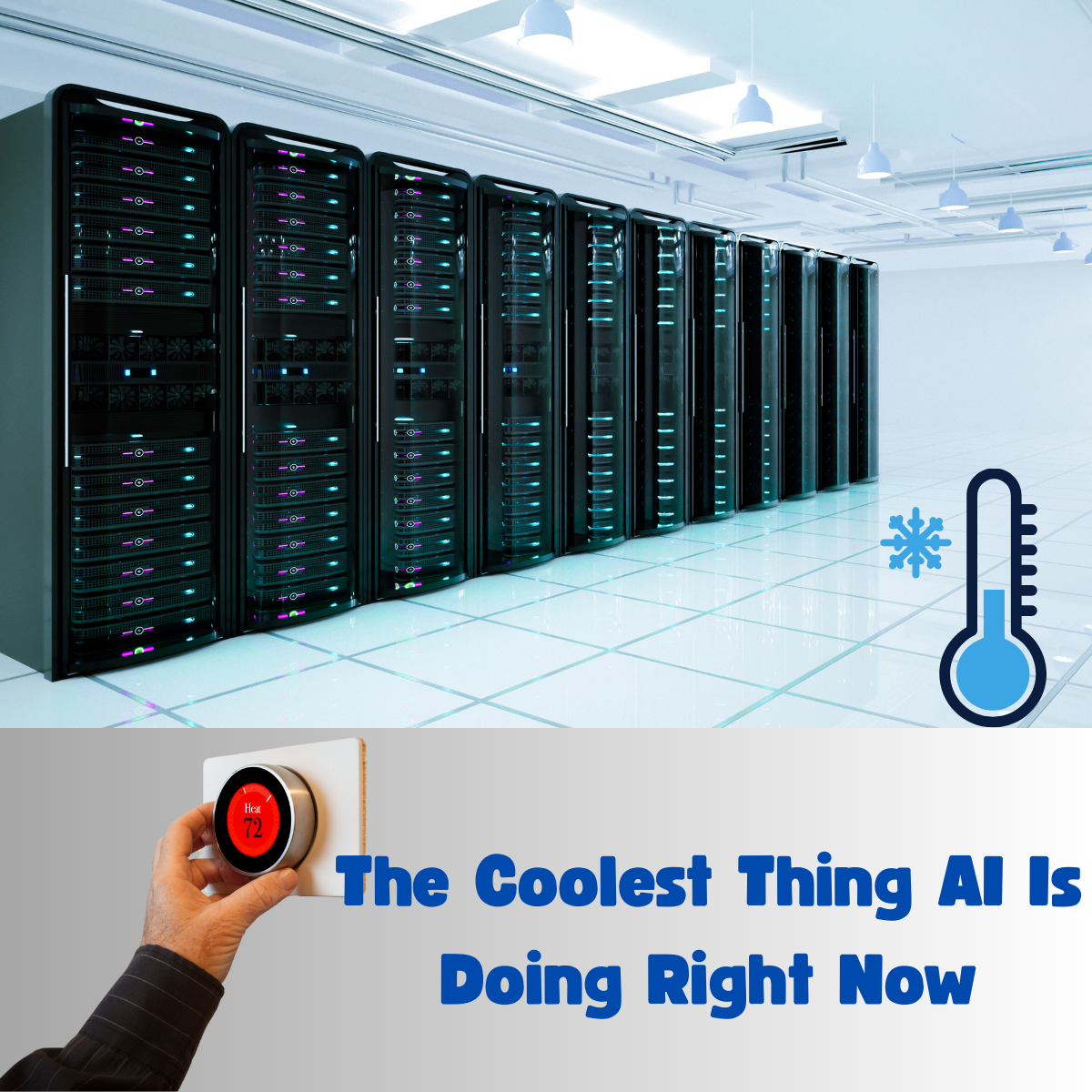Posted At: Aug 14, 2025 - 304 Views

How AI Is Revolutionizing Data Center Cooling
As the digital world grows, so do the data centers powering it. From streaming your favorite shows to running AI models, data centers are the backbone of our online lives—but they’re also massive energy consumers. One of the biggest culprits? Cooling.
To keep thousands of servers running without overheating, data centers consume huge amounts of energyjust for climate control. Enter Artificial Intelligence (AI)—the unsung hero making cooling smarter, greener, and more efficient.
Let’s explore how AI is transforming the way we cool the cloud.
🌡 Why Cooling Is a Big Deal in Data Centers
Data centers generate enormous amounts of heat. Whether it's from CPU-heavy applications, GPU-powered AI models, or cloud-based services, that heat has to go somewhere. If it's not managed properly, it can lead to:
- Equipment failure
- Reduced performance
- Shorter hardware lifespan
- Higher operational costs
In fact, cooling can account for up to 40% of a data center’s total energy use.
🤖 How AI Enters the Scene
AI helps optimize cooling by analyzing vast amounts of real-time data from sensors, weather forecasts, and hardware usage to make intelligent, automated decisions.
Here's what AI brings to the table:
🧠 1. Predictive Analytics
AI models can predict when and where hotspots will occur in a data center before they happen, using historical patterns and current data. This allows cooling systems to act proactively, not reactively.
🧊 2. Intelligent HVAC Control
AI can dynamically adjust Heating, Ventilation, and Air Conditioning (HVAC) systems based on:
- Temperature fluctuations
- Server load
- Ambient humidity
- Outside weather conditions
This fine-tuned control avoids overcooling (wasting energy) and undercooling (risking damage).
🌬 3. Airflow Optimization
AI models can simulate and manage airflow inside server rooms, directing cold air exactly where it's needed and rerouting or minimizing flow where it's not. This reduces the need for constant full-system cooling.
📊 4. Real-Time Monitoring & Alerts
AI-powered monitoring tools continuously analyze system data to:
- Detect inefficiencies
- Flag anomalies (like sudden spikes in heat)
- Recommend fixes or automatically deploy them
🚀 Real-World Examples
✅ Google DeepMind
Google’s AI division, DeepMind, reduced the cooling energy used in Google’s data centers by up to 40%using reinforcement learning. The system autonomously learned how to adjust cooling equipment efficiently—far beyond human capabilities.
✅ Microsoft’s Project Natick
Though underwater data centers are a different beast, Microsoft’s AI systems monitored temperature and cooling efficiency across Project Natick’s sealed servers, optimizing performance even in extreme environments.
✅ Nvidia, Meta, and Amazon
These cloud giants are also leveraging AI to dynamically scale cooling systems based on real-time computing demand and external weather conditions—especially critical as they train large AI models.
🌱 Sustainability & Cost Savings
Besides better uptime and performance, AI-powered cooling contributes to:
- Lower carbon footprint
- Reduced operational expenses
- Prolonged equipment life
- Increased energy efficiency (PUE scores)
AI plays a huge role in helping data centers meet ESG (Environmental, Social, and Governance)goals.
🔧 How to Get Started with AI for Cooling
If you're managing or designing data center infrastructure, here’s how to tap into AI:
- Install Smart Sensors– Gather real-time data on temperature, airflow, humidity, and energy usage.
- Use AI/ML Platforms– Leverage existing tools or build custom models to analyze and act on sensor data.
- Integrate with HVAC & CRAC Systems– Ensure your cooling systems are controllable via software.
- Monitor & Iterate– Use feedback loops to improve model accuracy over time.
Many off-the-shelf tools and startups now offer AI-powered cooling optimization platforms tailored for enterprise use.
🧩 The Future: Autonomous Data Centers
AI isn’t just changing cooling—it’s reshaping the entire data center. We’re heading toward autonomous, self-optimizing facilitieswhere AI governs everything from workload distribution to power usage to environmental controls.
Imagine a data center that adapts to its surroundings, scales automatically with demand, and achieves sustainability without human intervention. That’s where AI is taking us.
AI and data centers are deeply interconnected—but while AI needsdata centers to run, it also helps make them smarter, greener, and more efficient.
In the race to build a sustainable digital future, AI-powered cooling is a win-win: less energy waste, more cost savings, and a happier planet.
